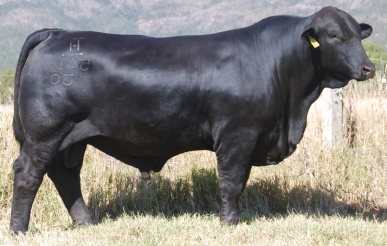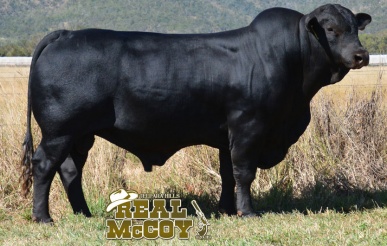CSONKA | Csonka of Brinks 30R4
$200.00 + GST
Sire: Lead Gun of Brinks 222K14 | Dam: Miss Brinks Uppercut 30L18 | DOB: 28/01/2005 Pronounced: Zon-ka
Notes:
- RARE SEMEN LOCATED! Csonka has been sold out for many years, but TGG has located a few straws of semen and are making this legend of the breed available
- To date, Csonka has 782 calves registered in the Australian Brangus Cattle Association, making him by far the most popular sire
- Even though he was born in 2005, his EBV rankings are still holding up. Ranks in the top 10% for 200 Day Weight Growth, short Gestation Length, EMA (Muscle), and IMF (Marbling).
- Have a look through his progeny here.
- He shaped the Telpara Hills herd and our early success. We have 263 calves by Csonka, so you can tell how much we believe in this bull.
- Sired some of our all-time best animals, including Telpara Hills Miss Csonka 541D9 (dam of the first Australian Brangus bull to sell for over $100,000- Van Damme), and Oaks Miss Csonka 541T7 (dam of Telpara Hills Miss Foundation 541L70- our greatest embryo donor)
- Sire of Sires! Sons and grandsons include Legacy, CoPilot, Van Damme, Guardian, Braxton, and Stonewall
*Rankings accurate at time of listing
Australian Brangus EBVs and Information
Reposted Article from the International Brangus Breeders Association
Csonka: His legacy continues to influence the breed, both domestically and internationally.
by Martha Hollida Garrett
Csonka of Brinks 30R4 was just one of many bulls born in 2005, but perhaps no other bull in the history of the breed has impacted and changed Brangus like he has in terms of producing both extremely popular and sought-after sons and daughters. He was a consistent multi-trait leader, and his breeding value has been passed on to his progeny, greatly impacting the breed.
Csonka was a product of mating Lead Gun of Brinks 222K14 to Miss Brinks Uppercut 30L18. Ken Hughes, then with Camp Cooley Ranch (CCR) selected the mating.
“I was confident these two genetic lines would complement each other. 30L18 traced back to Bravo and her pedigree included Uppercut, K0, and Big Easy and she had a lot of bone, muscle, was good footed, moderate in size, easy fleshing, and adequate in milk. Lead Gun traced back to Cadence, who at the time was one of the most used artificial insemination (AI) sires. The sire side delivered great growth, carcass and maternal numbers,” remembered Hughes, adding that for him, the bull’s most impressive attribute is the sons he produced and the consistency with which he did it.
Hughes added that even though that mating was replicated several times after the birth of Csonka, he was by far the best calf produced from that genetic cross.
Csonka drew a lot of attention as a calf, and everyone associated with CCR was impressed with him. Joe Fuller recalled that the “calf knew he was good and walked like he already owned the pasture.”
He was tagged 30R4 and when it came time to grade the bulls for the 2006 fall bull sale, he was the No. 1 graded bull.
“Ken [Hughes] knew the importance of this super individual and agreed to put him in the sale. We were naming the bulls after football greats and he reminded me of the great running back Larry Csonka, who played for the Miami Dolphins, when they won the Super Bowl. Csonka would go on to sire many sale arena and pasture champions,” said Fuller.
Meanwhile in Georgia, long-time Polled Hereford breeders, Joe and Catherine Kassler, of The Oaks Farms, were contemplating a major change in the direction of their cattle program. They had used Brangus-type cattle for recips for a number of years and were impressed with the maternal qualities, the growth, and adaptability.
“After much discussion and evaluation, we decided to convert our operation to a registered Brangus program. Our research of genetics led us to CCR. We made a trip to Texas, spent time on the ranch, and looked at lots of cattle with Joe Fuller. We purchased close to $750,000 of females in early 2006, including some from the Ray Johnston program, who was a CCR cooperator at the time,” recalled Joe Kassler.
Then the Kasslers would return to CCR for the 2006 CCR Fall Sale, and in hindsight it’s easy to say, The Oaks’ program and the Brangus breed would be forever changed that day.
“Our trust in Joe [Fuller] proved correct. He described Csonka as a great herd sire prospect when he showed Csonka as a calf and again, when we arrived for the sale. We looked at many bulls, but we were always drawn to Csonka. It took $65,000 to buy half-interest and full possession, but we did it and he was the high seller. It was a decision we never regretted and an investment that proved to be very profitable for us in terms of herd improvement and dollars. In 2008, we would negotiate and take full possession of Csonka and all collected semen,” described Kassler.
“The Kasslers wanted a high-impact herd sire to complement the initial investment they had made on the female side to establish an elite Brangus program. We all believed that Csonka would have a great impact, but wow, did he exceed our expectations. Early on, we thought he was going to be a bull-producing sire, as Patton and LTD were part of his first calf crop. But just when you thought that was his niche, his big-milking females started cranking out great calves and all of a sudden, Csonka daughters were in demand—and that remains true today. His progeny are continuing to add to his legacy and will influence the breed for many generations,” remarked Fuller.
To say Csonka was making friends in the breed would be an understatement. With each new calf crop and as calves arrived from his daughters, Csonka was changing the breed. He was replicating his genetic ability and was fast becoming a trait leader in several categories. His ability to transmit excellent numbers continues today and has been a game changer for many herds and the breed.
“He not only worked—he worked across a lot of different cow types. He was consistent and as predictably good as you could want. There were no throw aways in his calf crops. His daughters are good-uddered, complete, soggy-made, moderate in size, milk good, and transfer growth and carcass traits. I describe them as incredibly powerful,” stressed Kassler.
By the beginning of 2010, Csonka had produced several high-selling sons and daughters, including the $50,000 LTD bull, $25,000 Patton, and $30,000 Guardian. The Oaks have recently acquired an interest in a Csonka son, named appropriately, Legacy, who is out of the great 302L9, who is also the dam of Washington of Brinks. In addition, many of his daughters had topped sales over the past two years. At that time, his EPD numbers tracked him in the top 5 percent of the breed in five categories—weaning and yearling weight, scrotal circumference, intramuscular fat, and ribeye area. Then, as his daughters entered production, his milk and total maternal EPDs went to top 5 percent rankings, also.
The Kasslers, recognizing the greatness of the bull, decided to syndicate him at the Global Collection Sale in Houston. Six syndication blocks, which each included 36 shares, were offered for public sale and 30 individual syndication shares at $5,000 were offered. All of the syndication blocks and 25 individual shares were purchased during the Houston event. His value with the syndication and semen sales was well established, and he was writing his own chapter of Brangus history.
As part of the syndication agreement, the Kasslers did not sell any semen on Csonka domestically from 2010-2013, but semen was marketed internationally. Csonka progeny today can be found in South Africa, Colombia, Paraguay, Uruguay, Brazil, Argentina, Mexico, and Australia.
Telpara Hills Brangus Australia, owned by the Pearce family of Queensland, Australia, first used the bull in that country and today he is the most used sire on the continent.
Brittany Pearce, marketing manager for Telpara, said, “We used Csonka very heavily in the Telpara Hills herd and liked him so much that we partnered with ABS Australia to secure the Australian semen rights to him. This was the basis of our semen company, Telpara Global Genetics. Since then, Csonka has become the most used sire in Australian Brangus history (582 calves and counting with 111 in the Telpara Hills herd), and has left a legacy that is unmatched by any Brangus bull in modern history.”
“His daughters born at Telpara Hills have repeatedly broken Australian sale price records and his grandson, Telpara Hills Van Damme 541H30, smashed the AU sale record in 2015, selling for AU$110,000 (at the time it was equal to the U.S. dollar),” she added.
At the 2014 Global Collection Sale, The Oaks offered one of his daughters, Oaks MS Csonka 541T7, which sold for $70,000 to Bushley Creek Cattle Co. and Telpara Hills. Other daughters were also commanding the high-selling position across many sales and they were now as in demand as his sons. His impact on the breed was clearly evident.
Fast-forward to today and you’ll see 2,290 progeny registered to him as the sire. You can read a lot of Brangus sale reports and find a Csonka daughter or son has topped the offering. The Oaks offered three full brothers, sired by Csonka, in their 2016 sale; and the interest and demand for them was strong, as half-interest in one saw a final bid of $15,000 and full interest in the other two sold for $15,000 and $11,000. And his EPD numbers continue to track in the top percentiles of the breed in most categories.
“I remain impressed with the EPD values and the dollar values still present in Csonka and his progeny. For a 12-year-old bull to remain a multiple trait leader for yearling, milk and scrotal circumference, and his numbers for weaning and ribeye area to remain in the breed’s top 10 percent with a top 15 percent intramuscular fat is truly impressive and an indication of just how far advanced Csonka was in his time. He adds ring value and dollars to the bottom line, as consistently as any breeding bull in the Brangus breed,” remarked Mark Cowan, formerly with CCR and now with American Marketing Service.
Cowan has had a front-row seat on the block for the majority of those sales that have seen Csonka progeny top that particular day’s offering.
Vince Roberts, manager of The Oaks Farms, says the bull’s popularity is overwhelming.
“The number of calls we received during his lifetime for semen was incredible. Not a week went by, when we didn’t get a call. Now we are getting calls in volume inquiring about his daughters. We have right at 100 Csonka-sired females working in our herd, as well as three sons we are using. His influence and impact are continuing,” described Roberts.
The Kasslers wanted a high-impact herd sire in 2006 and they selected one in Csonka. Their return on investment was high in terms of quality and dollars, and the bull will forever be linked to their program.
Csonka died in June of 2016 and is buried under a large oak tree at the entrance to The Oaks New River Ranch headquarters.
“It was a fitting final destination, as he not only marked our entrance into the breed, but he changed for the better the standard of performance and quality of The Oaks’ program and the breed,” concluded Kassler.
In retrospect, the bull was named for an exceptional sports figure, and he not only became a household name in Brangus, but a most valuable player in many programs and his legacy continues to build in the U.S. and abroad.














